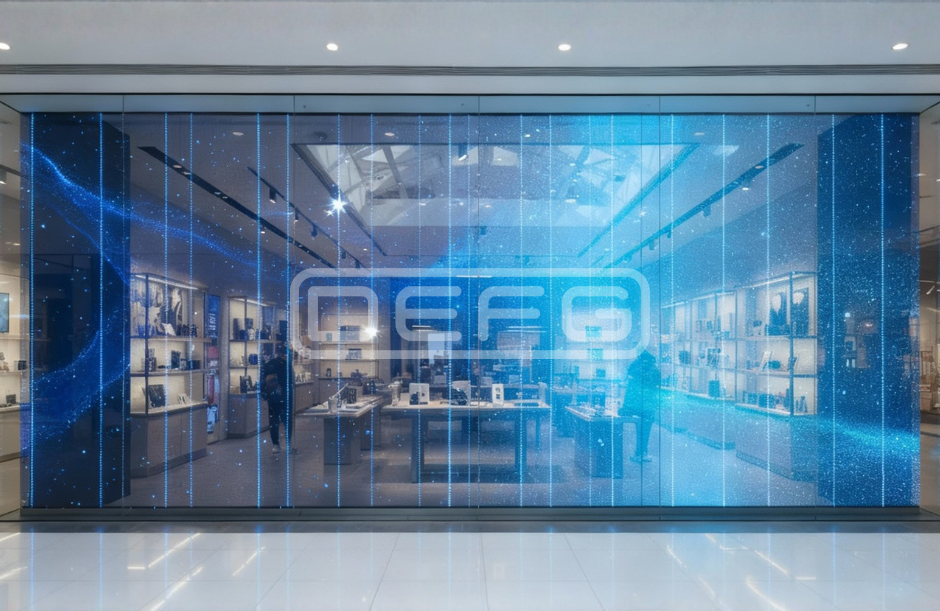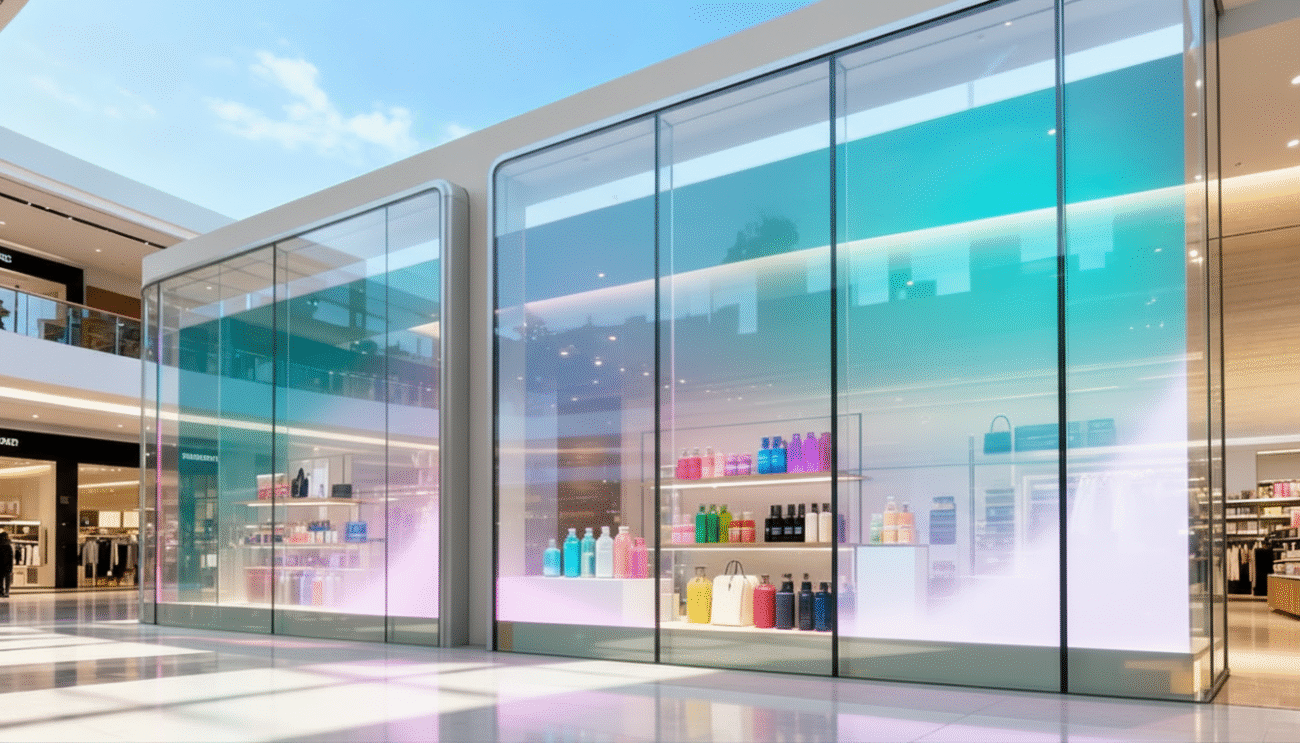3 Crucial Differences Between LED Transparent Film and Standard Transparent LED Display You Need to Know
The modern business landscape demands instant differentiation and a lasting first impression. Because a customer’s first sight is often the key to engagement, a visually striking storefront is no longer a luxury—it’s a necessity.
A leading innovation that perfectly answers the call for a premium, contemporary, and eye-catching facade is the See-through LED Display technology. This innovation allows you to showcase dynamic video content and stunning graphics while still maintaining transparency, letting customers view the interior of your premises. However, this see-through technology is broadly categorized into two distinct types with clear differences in properties and use cases: the flexible Transparent LED Film Display (often called LED Film) and the robust Transparent LED Cabinet Display.
This article provides a premium, technical breakdown of the 3 most essential differences to help you select the ideal see-through LED Display solution for your unique business needs.
1.Installation Method and Structure
The most apparent difference between these two see-through LED Display types lies in their physical construction, which directly dictates the installation process.
Transparent LED Film Display (e.g., DEFG I-Series)
- Physical Properties: Engineered to be ultra-lightweight, razor-thin (as slim as ≤ 2 mm), and exceptionally flexible.
- Installation: It is designed for direct adhesion onto glass surfaces, much like applying a high-tech film. Crucially, it seamlessly supports curved glass surfaces or uneven installations without the need for cumbersome, heavy steel support structures. This results in a fast installation process that preserves the architectural integrity and sight lines.
Transparent LED Cabinet Display (e.g., DEFG DR/DM Series)
- Physical Properties: Manufactured as pre-assembled, modular LED cabinets (or ‘Cabinet’). These cabinets possess a rigid, robust, and highly durable frame, typically made from materials like lightweight die-casting aluminum.
- Installation: This solution inherently requires a dedicated support structure (usually a steel frame) to securely interlock the individual cabinets. Installation planning must account for sufficient surrounding clearance to ensure easy access for future maintenance and service.
2.Transparency Level and Display Format
While both are “see-through” technologies, their actual degree of transparency and physical form factor varies significantly.
Transparent LED Film Display (High Transparency, Customizable)
- Transparency: Offers a phenomenally high transparency rate, typically up to 90% (depending on the model). This makes the display virtually invisible when the content is turned off, ensuring maximum natural light penetration and an unobstructed interior view.
- Format: The display comes as a thin, flexible transparent sheet that allows for full customization of size and shape to precisely fit the dimensions and contours of the installation area, making seamless integration possible on complex glass facades.
Transparent LED Cabinet Display (Structural Transparency, Fixed Module)
- Transparency: Offers a high transparency rate, typically around 80% (can vary based on pixel pitch/series). It uses a lattice-like structure to support the LED lamps, ensuring images are crisp and vibrant due to the robust placement of the LEDs.
- Format: It consists of fixed, durable, pre-sized Cabinet modules. The final display size is determined by assembling standard cabinet units together, prioritizing structural strength and long-term durability.
3.Ideal Applications and Use Cases
Choosing the correct display is primarily dictated by your installation environment and aesthetic objectives.
Choose ‘Transparent LED Film Display’ When:
- Primary Application is Glass: Your objective is to place the display directly onto glass facades, storefront windows, or glass railings, utilizing these existing areas as the main display canvas.
- Seamless Integration is Key: You demand maximum architectural harmony, particularly in modern spaces featuring curved glass or where an ultra-minimalist, near-invisible appearance is essential.
Choose ‘Transparent LED Cabinet Display’ When:
- Non-Glass Mounting is Required: You need an installation in a location not directly adhered to a glass surface, such as Hanging installations, or Floor-standing setups within an open space.
- Large-Scale and High Structural Stability are Needed: You are constructing a massive LED Display that requires the long-term structural integrity and enduring stability of a robust cabinet framework.

Which Transparent LED Display is Right for Your Business?
The optimal choice hinges entirely on your aesthetic goals, installation constraints, and budget. If your priority is to create a dynamic, cutting-edge design with effortless installation on glass and the highest level of transparency, the Transparent LED Film Display is your perfect match.
Conversely, if you prioritize vivid display performance on a robust, large-scale structure suitable for varied installations (hanging or standing), the traditional Transparent LED Cabinet Display provides greater stability and strength.
To navigate this choice with confidence, DEFG Co., Ltd. is ready to provide free expert consultation. As a leader in advanced LED Display technology with over 10 years of specialized experience, we offer comprehensive, professional, end-to-end solutions—from Design and Precision Installation to Reliable After-Sales Service. Let our expertise help your business achieve unparalleled visual success in every dimension.














